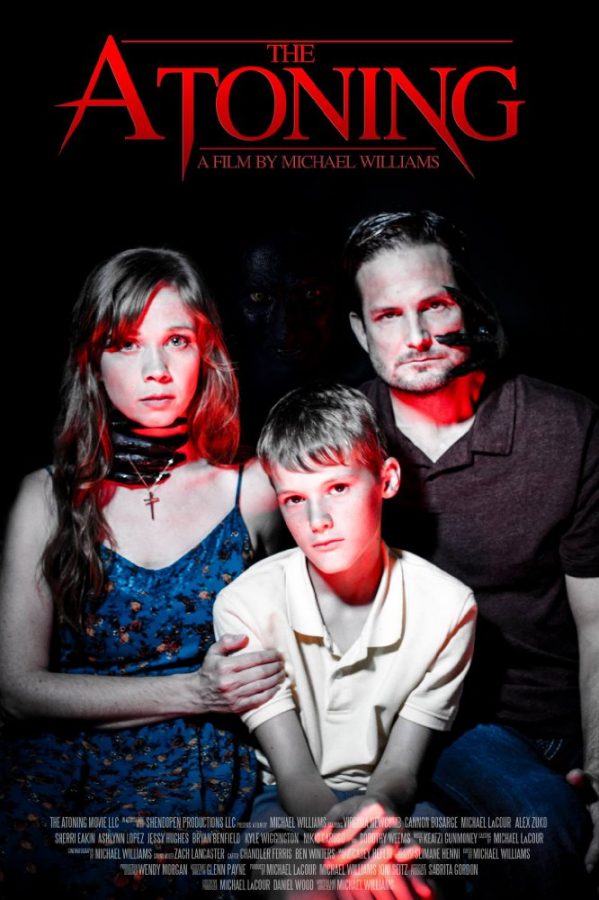Movie Review: “The Atoning”
Theatrical release poster for “The Atoning”
February 6, 2017
“The Atoning,” a horror film written and directed by Mississippi native Michael Williams, makes up for what it lacks in budget with a superb cast and an amazing utilization of its limited assets. In this film, Williams shows his true potential as an up-and-coming director as “The Atoning” is only his second film following “Ozland.”
“The Atoning” does a fantastic job of taking advantage of its minimal set, which is the small antebellum home of co-producer Joni Seitz, by using a mixture of slow, panning shots to begin the slow boil of fear in viewers and short, choppy shots to put viewers on the edge of their seats. One of the biggest positives that “The Atoning” has going for it is the way that the camera work compliments the tone of fear and foreboding that Vera, Ray, and Sam (the three main characters) portray throughout the film.
A great set and director are useless if the cast of a film is sub par, but luckily for “The Atoning,” this was not an issue. Virginia Newcomb, who plays the role of Vera, portrays the difficult character of a conflicted mother and wife amazingly well. Newcomb’s grief at her on-stage-son’s fate is heart-wrenching to watch and utterly convincing. Cannon Bosarge and Michael LaCour, who play Sam and Ray respectively, also pull off their roles well, but at points their father-son relationship seemed to fall a little short. However, Bosarge executes his role as Sam fantastically; it is uncommon for young thespians to pull off such a demanding role at such a young age. As a trio, Newcomb, Bosarge, and LaCour pull off the dynamic of a strained family very well.
“The Atoning” begins at a slow pace, building up tension as the haunting unfolds in front of the viewers until a huge twist brings the audience into a brief lull before the movie rises to a crescendo with a phenomenal ending. The primary issue with the pacing of Williams’s film lies in the fact that some scenes feel a little drawn out; after finishing the film, I felt like a few minutes could have been trimmed from the runtime to more effectively build the atmosphere of dread.
The true beauty of “The Atoning” lies in the promise that it holds for Mississippi-made independent films. It shows that when a director with a vision, a fantastic cast, and an amazing crew come together, a dream can be realized.
For readers who would like to take a peek at “The Atoning” for themselves, they can go to either the Oxford Film Festival on Feb. 18 or the Magnolia Independent Film Festival on March 4.









